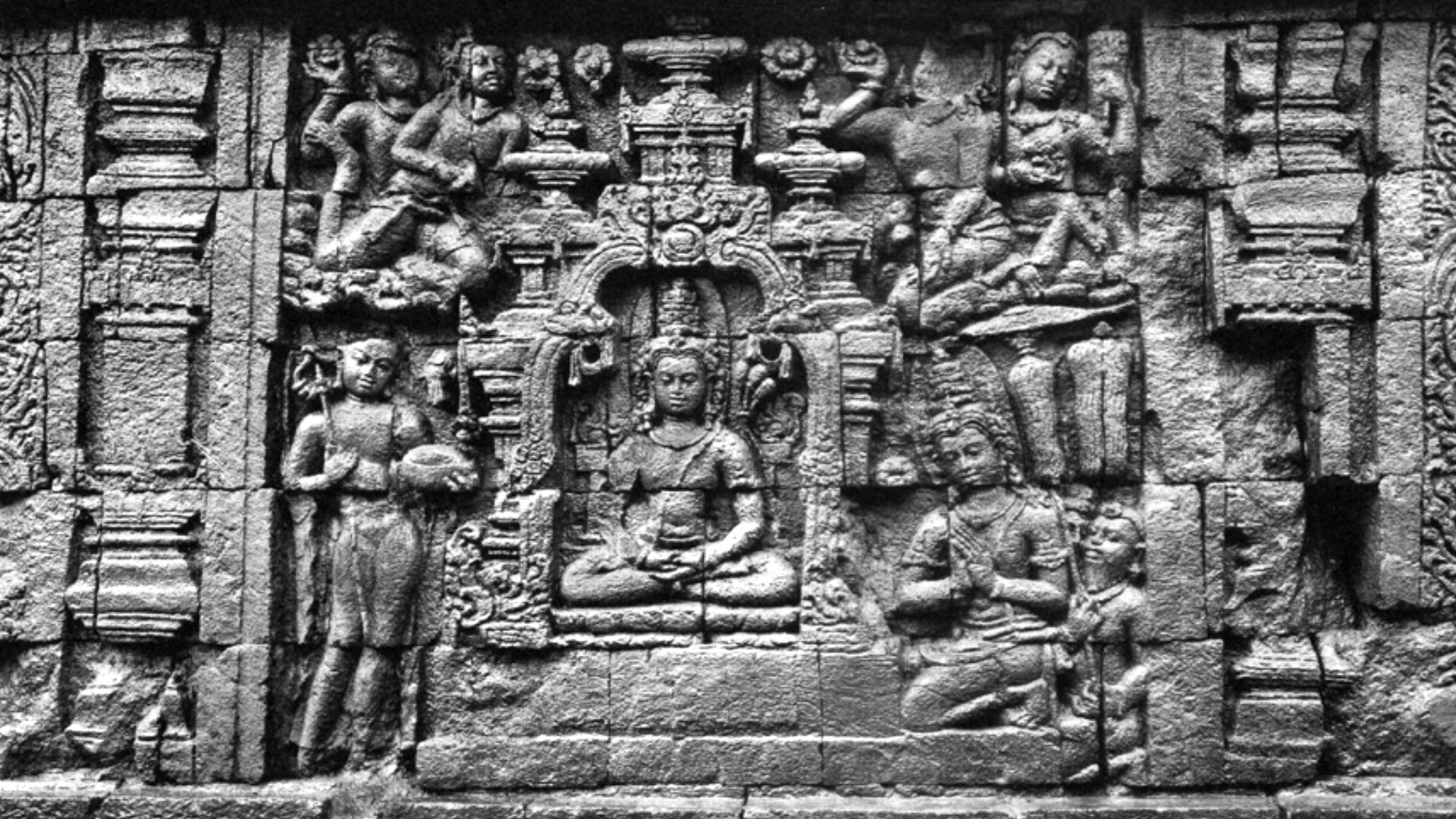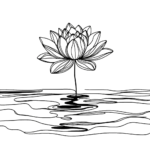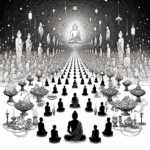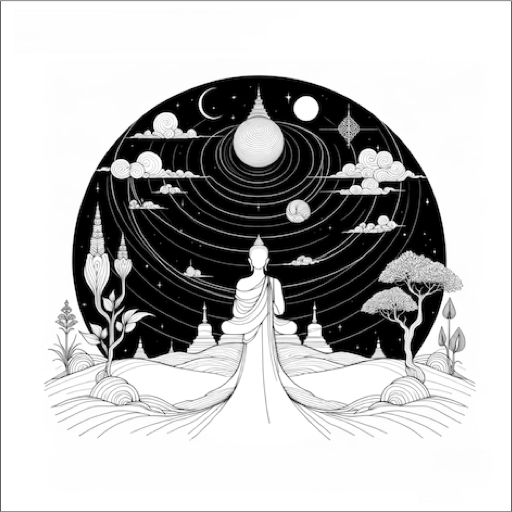Alex Li Trisoglio
Aspiration: Week 1 – Introduction
Introduction to Week 1
Welcome
Good morning, good evening, and welcome to week one of Aspiration. I want to express my gratitude for all of you coming to join this program. And I hesitate to use the words “spiritual” or “transformational”, but I really hope that it will be both of those things for you.
So first I’d like to give a quick introduction to myself and also my connection and experience with the King of Aspiration Prayers. I’ve been a student of Dzongsar Khyentse Rinpoche for almost 30 years, and he appointed me an instructor almost two decades ago. I’ve always been very drawn to his way of teaching the Mahayana and Vajrayana view and path. And I hope that what I share with you will be authentic to his lineage. I hope it will be familiar to his students and inspiring to those who are new.
Outside Dharma, I’m also a professor of leadership and an executive coach. So I’m very interested in questions of how we engage in transformation and change, both at an individual and a group level. What does it mean to have goals and aspirations as people living and working in the modern world?
I also have a background in theoretical physics and computer science, and I’ve done research in artificial intelligence. So I’m very interested in the nature of reality, the nature of mind and consciousness as understood by contemporary science. And [the question of] once we arrive at some kind of intellectual or scientific understanding of this truth, what then? How can Buddhism help us align our lived experience with what we know from the cutting edge of science?
And speaking very personally, I’ve always been interested, since I was a teenager, in the different wisdom traditions of East and West. My wife, Claudia, is Chinese-Canadian, and we have two young sons. And I hope that one day when they are old enough to start asking bigger and deeper questions about life and about their own dual East-West heritage, this program might inspire some interest and curiosity in them.
Program goals
So with that, let me turn to the goal. My aim with this program is really to help deepen understanding and application of the King of Aspiration Prayers in your personal and spiritual growth. I don’t want this to be just about intellectual study or information, but really to be a journey of transformation, so that ideally there’ll be some kind of shift in your mind and your heart between now and the end of the program.
I hope that by the end you’ll be one step closer to being able to aspire in the way that Samantabhadra does. I hope that you’ll have a greater sense of wisdom and compassion, and an expanded capacity for altruistic aspiration. I also hope you’ll have a greater appreciation of Mahayana Buddhism, and greater interest in engaging more deeply in the path of study and practice.
Just a note on language, I’m going to try to not use more Sanskrit or Tibetan than we have to, but rather than give the full name of the prayer going forwards, I’m going to call it the Pranidhana-Raja, as Dzongsar Khyentse Rinpoche does. From the Sanskrit, “Pranidhana” has the meaning of an “aspiration”, or “prayer”, or “vow”, but also the sense of “conduct”, in the sense of how we carry ourselves in the world. And finally, it conveys a sense of “meditation” and “contemplation”. It’s a very rich word, covering a lot of different things. And “Raja” means “king”, or “sovereign”, or “chief”, or “best of its kind”. So the title of the prayer, the Pranidhana-Raja, is the king, or the chief, of aspiration prayers. And I hope as we go through these weeks you’ll understand why it has that name.
The importance of aspiration
The importance of aspiration – for Buddhists
I want to talk a little bit about why is aspiration, or prayer, important. For those of you who are already following a Buddhist path, I hope you already appreciate that aspiration is foundational. Dzongsar Khyentse Rinpoche has taught with increasing emphasis over the last ten or so years that aspiration really is our core and our central practice, from beginners to those who practice the highest non-dual paths.
(1) What is our aspiration? Even if we don’t have time to do a lot of formal retreat or formal sadhana practice, he has often said, “Aspiration is one thing that is easy to do, that we can do at any moment. There really are no excuses not to be able to do that.” So in that sense, it’s very user-friendly, very economical, as he says. I want to give us a chance to revisit and deepen and challenge our understanding of how do we approach aspiration right now in our practice.
(2) What is kindness? Secondly, His Holiness the Dalai Lama often says, “My religion is kindness.” It’s among his most quoted words. So what does it mean to be truly kind and compassionate? And how can we integrate these ideas of kindness and compassion with the wisdom of non-duality? What does that mean? And how will our kindness, our compassion, and our wisdom transform as we progress along the Buddhist path?
(3) What is the nondual view? Third, for those of you who are Buddhist, the two truths. All Mahayana students are familiar with the Heart Sutra, and the central line that “Form is emptiness, emptiness is form.” But what do we actually mean when we say emptiness is form? So East Asian Buddhism in general, and this prayer in particular, offers a really wonderful depiction of what that means — “wonderful” not just in the sense that it’s great and admirable, but in the sense that it will really cause us to wonder. It’s a wondrous thing. There are images which are beyond our normal ability to conceive and understand, and that’s really a very important part of understanding the Middle Way in the Mahayana. We also know that the Middle Way philosophy and the two truths are foundational to our practice and our cultivation of wisdom. But for many of us, this topic remains austere and challenging. So how might this prayer help us better understand the nondual view that is at the heart of the Mahayana and Vajrayana practices?
The importance of aspiration – for non-Buddhists
(1) What does it mean to live a good life and be a good person? But also, I know there are some non-Buddhists who are watching and listening to this. And so I hope you will also find some relevance here. Firstly, whether or not you’re a Buddhist, we all have aspirations in our life. We’re all wanting to live a good life, however we define that. So what does that mean to us? What does it mean to live a good life? What does it mean to be a good person? This prayer can really help us think about that.
(2) What is consciousness? How can it be made “good”? Secondly, the question of consciousness or sentience. What is the nature of mind? And if we can accept the possibility of consciousness, what does it mean for a mind to be good? Can an artificial intelligence become conscious or sentient? This is becoming increasingly relevant now that artificial intelligence is moving so quickly and people are asking questions about whether our work on AI is aligned with what we want as humans. How can we ensure our AIs are going to be good rather than not good, whatever that might mean? How might a mind or consciousness — whether human or AI — be developed, or be transformed? What is its highest possibility, as in when we talk about enlightenment? What does that actually mean?
(3) How can we respond to the challenges of the modern world? And thirdly, just in the world in general, we’re all confronted with interdependence. We know we have climate change and global environmental crises. We see wars and global events being delivered to our iPhones in real time and in high definition video, and it can feel overwhelming. How might we respond? How can we cultivate mental health and emotional resilience? What does it mean to have the right kind of ethics for the 21st century, to be engaged socially and politically? How can we transform our hearts and our minds to embody the realisation of interdependence and compassion?
So I hope we’ll find that the Pranidhana-Raja gives us profound insight into all of these questions.
I also want to share with you a poem. This is from William Blake, “The Auguries of Innocence”. William Blake was an 18th to 19th century English poet, largely unrecognised in his life, but now considered a seminal figure in the history of poetry and visual art in the Romantic age. And this poem starts with some very famous lines, which you may know. I’ll just read the first four lines:
To see a world in a grain of sand
And a heaven in a wild flower,
Hold infinity in the palm of your hand
And eternity in an hour.
I think many people are touched by words like this, even if we may not really understand what it means or how we might integrate that understanding into how we live. But I find it very inspiring that many of us are touched by language like that, even if we have no real connection to Buddhism or the spiritual path. They’re like seeds that one day will hopefully turn into flowers or trees that will blossom. It’s the first stirring on the Bodhisattva path.
So whether you’ve been on the Buddhist path for many years, or whether you just find something inspiring about seeing the world in a grain of sand, I hope the Pranidhana-Raja has something for you.
Program
This first session aims to introduce the prayer and to talk a little bit about what’s going to happen in the coming weeks. I’m going to talk about the structure of the program, where each week we’ll focus on a different verse and a different aspect of the prayer, and how we’ll integrate these teachings on compassion and wisdom into the journey.
The sessions will all be recorded and eventually transcribed, and there will be a discussion forum on the website for an opportunity to ask questions, to engage in conversation with each other. And I really want to encourage you not just to treat this as an online series of lectures, but to engage with each other, and also to engage in your own practice, in your own reflection, what does aspiration mean to you, and how, if anything, does this prayer change the way you think about aspiration.
And as part of that, I want to encourage you not just to note the things that you might already agree with or disagree with. Don’t just think in terms of your current understanding. Allow yourself to be touched and provoked and challenged. One of my mentors was Bob Kegan at Harvard University, and he would always encourage his students to approach the world with a transformational view. In other words, if you find something that doesn’t fit your view, or something that you don’t like, don’t try just to change it or ignore it or hope it goes away. Instead ask yourself, how can this experience, or this piece of information, transform me? Mahayana students will recognise this as very similar to the mind training practices of Lojong. And you may find there’s perhaps going to be quite a lot in this prayer that may not seem very familiar in terms of our ordinary way of seeing the world. So there’s going to be a lot of opportunity for us to challenge ourselves and to embrace a broader, wider understanding.
I’m going to invite questions in the chat offline. In future weeks we may have opportunity to do more Q&A during these live sessions, and if there is sufficient demand I’ll be more than happy to have separate sessions just for Q&A.
Historical context & significance
Samantabhadra
So first I’d like to talk a little bit about the historical context and significance. Who is Samantabhadra within the Mahayana tradition? In the Sanskrit, the name Samantabhadra means wholly, as in fully, auspicious. “Samanta” has the meaning of universal, or whole, or entire, or being on every side. And “bhadra” means blessed, or auspicious, or fortunate. It also means good, or gracious, and even has the meanings of excellent, or fair, or beautiful.
Samantabhadra, the Bodhisattva, is a key figure in Mahayana Buddhism, embodying the principles of universal virtue and aspiration, and the commitment to the enlightenment of all beings. He’s celebrated for his purity, moral integrity, and unwavering aspiration. And just like Mañjushri is associated with wisdom and Avalokiteshvara is associated with compassion, for Samantabhadra there is a special emphasis on the power of aspiration.
He’s commonly depicted as riding a six-tusked white elephant to symbolise his aspiration and enlightened activities. There are some of the East Asian sutras that go even further, for example in the Three-fold Lotus Sutra, his elephant has six tusks but seven legs, each of which is supported by a lotus flower. And there are adornments of bathing pools, precious daughters, all kinds of other things that come along with the elephant. So there’s a very rich symbolism, which perhaps we can go into in a future week. And all is to highlight the interconnectedness of all beings and the boundless nature of the compassionate aspiration of the Bodhisattva.
Samantabhadra is also known for his Ten Great Vows that provide a framework to develop compassion, wisdom, and how to benefit others. And really central to his teaching is the cultivation of bodhichitta, aiming for the enlightenment of all beings. His aspiration prayer has been revered across various traditions, certainly very richly in the Mahayana Sutras of East Asian Buddhism. And he appears a lot in the Lotus Sutra and the Avatamsaka Sutra, in Chinese, Japanese, and Korean Buddhism especially. He’s very much a model for living a compassionate, service-oriented life, because he’s known for his selfless vow to forego his own personal enlightenment until all beings are enlightened.
The Avatamsaka Sutra and the Gandavyuha Sutra
Now the King of Aspiration Prayers itself is part of a huge and vast Sutra called the Avatamsaka Sutra. And actually even within that Sutra, it’s in the concluding chapter, which is actually a very large sutra on its own called the Gandavyuha Sutra. The whole thing presents a very rich, cosmological vision of interconnected existence. It is recognised as one of Buddhism’s most vast and comprehensive texts, painting a picture of how all things are interrelated in a kind of cosmological sense.
The Avatamsaka Sutra originated in the Mahayana communities in India in the early centuries CE, and then spread across China and East Asia. And it has been very influential in East Asian Buddhism, certainly in Chan and Zen, but also especially in Huayan (Kegon) Buddhism. And specific parts of the Sutra, like the Ten Stages Sutra (Dashabumika Sutra) and the Gandavyuha Sutra, have played a profound role in developing an understanding and practice of the Bodhisattva path throughout Mahayana Buddhism, including Tibetan Buddhism.
And the fact that this Sutra and this King of Aspiration Prayers is so central to both East Asian Buddhism and Vajrayana Indo-Tibetan Buddhism, really acts as a bridge between the different Mahayana traditions. Because just as it’s chanted and practiced throughout East Asia, it’s also at the heart of the big Tibetan prayer festivals, the Mönlams that are held in Bodh Gaya. And in fact, just last October 2023, Dzongsar Khyentse Rinpoche was holding the Dzongsar Mönlam in Bodh Gaya and he actually taught on this prayer there. And in most of the Mönlams, the main practice is this practice of the King of Aspiration Prayers. So for any of us with a connection to the Mahayana or to the Vajrayana, this prayer has a very rich history and offers a rich source of connectivity for us.
It’s also very rich philosophically because it incorporates both the Mind-Only school (the Yogachara), and the Middle Way teachings of the Madhyamaka. So perhaps in future weeks we’ll delve into that a little bit more deeply, as Rinpoche did in his teachings. And in order to approach this with the right attitude, we need to go beyond our ordinary understanding of a single historical Buddha, or for those of us who practice Vajrayana, a single deity that we might visualise. Because in this sutra, in this prayer, there’s a vision of the universe that is brimming with infinite Buddhas and Bodhisattvas. Very large, very small, billions upon billions upon a single atom. So there’s a very different way of relating to what it is to understand a Buddha, what it is to understand the universe as an enlightened place.
The prayer and the sutra have also had a huge impact in art and practice throughout the Buddhist traditions. And for those of you who’ve had the opportunity to go to Borobudur in Indonesia and seen the amazing temple there, out of the four layers or stages of the temple, the top two, and actually the half of the next one down, are devoted entirely to the Gandavyuha Sutra, in which this prayer appears. So this has also very much been a core part of Buddhist iconography and Buddhist art.

From Fontein, Jan (2012) Entering the Dharmadhātu – A Study of the Gandavyūha Reliefs of Borobudur.
And it has also very much been celebrated by the great kings and ministers and donors. Not least because in the Gandavyuha Sutra, as we’ll discover in future weeks, the hero of the story, Sudhana, was himself a nobleman, the son of a very rich merchant. And his story is really a story about what can you do with your life if you have all the material wealth and satisfaction you might need? What else is there left to do with a life? And in his case, he has an opportunity to meet Mañjushri and receive instructions to go and seek out teachings on Dharma. And eventually, after meeting 53 different great teachers, his last meeting is with Samantabhadra. It’s an almost mystical encounter, at the end of which Samantabhadra recites this King of Aspiration Prayers.
So it’s the end of this incredible journey, the pinnacle of this journey, but also, as Rinpoche said, how fitting that a journey which is through the very heart of the Mahayana path should end just as it began, with aspiration.
Key themes
Compassion
I’d also like to talk a little bit about some of the key themes in this prayer. Because as part of the Bodhisattva aspiration, we have themes of compassion, wisdom, bodhichitta — which is the aspiration for the enlightenment of others — and their integration on the Bodhisattva path itself. So what does it mean for us to engage with this path as practitioners? I want to say a little bit about each of these concepts, which are really the background and the underpinning for this prayer, and which we will keep revisiting in the weeks ahead.
So firstly, compassion. You may well be familiar with the Buddhist understanding of compassion, which is the heartfelt wish for all beings to be liberated from suffering. And it really is the driving force behind the journey of a Bodhisattva, pushing us beyond our self-interest and our desire just to look to our own needs, to really being motivated by a deep concern for the welfare of others. And in particular, there’s an emphasis on the universality of this compassion. Not just for ourselves, or for our friends and family and people we like, but for all sentient beings, all different forms of life, people that we may have less interest in, people we may actively dislike. How can we cultivate that same sense of compassion for them? And that in itself becomes a very great practice of expanding our hearts and expanding our minds.
Wisdom
The next core element is wisdom, which in the Mahayana is all about emptiness, or shunyata, or interdependence. It’s a cornerstone of Mahayana Buddhism, where we’re taught that all phenomena do not have any intrinsic or inherent or independent existence, but they only arise through interdependent relationships. This doesn’t mean at all that we end up in a place of nihilism, rather that we are liberated from this grasping to self, to ego, which is the root of suffering. And relatively, of course, wisdom gives us the discernment that we need to navigate the world skilfully and to act in a way that really does benefit others, rather than just blindly stumbling through aspiration alone.
So the Bodhisattva path really integrates the union of wisdom and compassion. We must clearly understand and realise the nature of wisdom, and also act from a place of deep compassion. And in contrast to the Western understanding of a wise person being old with lots of grey hair and knowing a lot of different things, the Buddhist idea of nondual wisdom means going completely beyond conventional understanding and fixed dualistic ideas, and being able to embrace limitlessness and ultimately inconceivability. And this prayer will bring us again and again to a vision of limitless Buddhas, going beyond a linear historical time, but the simultaneity of past and present and future. The idea of a sacred or enlightened world.
I remember a story. There was once a mother who went to Albert Einstein and she wanted her son to become a scientist. And she asked Einstein, “What reading material should I give him?” And he said, “Fairy tales and more fairy tales.” So I think there’s some great wisdom in going beyond our rational limitations. And I think this prayer and the sutra behind it will really help us to do that.
Bodhichitta
Next bodhichitta. In Mahayana Buddhism, this is the mind or the heart and mind of enlightenment, the unwavering aspiration to attain Buddhahood for the benefit of all beings. It’s the seed from which the vast tree of enlightened activity grows, nourished by our practices and aspirations. It really helps us to go beyond our limited worldly aims and our limited understanding of what it is to help another person. And the prayer is not only a celebration of bodhichitta, an admiration of this noble aspiration, but it’s also a manual for how we might cultivate it and what kinds of attitudes and actions we can engage in as an aspiring bodhisattva on the path.
The bodhisattva path
The bodhisattva path itself unfolds through a series of stages as we develop more virtue, more capacity, more wisdom, more compassion. And the prayer introduces us to these practices, the paramitas of generosity, discipline, patience, diligence, meditation and wisdom. With each step, we are motivated to increase our own capacity and accomplish enlightenment so that we might better be of benefit to others. And we always remind ourselves that although the aspiration may feel very idealistic, it’s not just an idealistic aim. It’s a practical commitment that is really an invitation for us to practice and put this into action in our own lives.
So just to summarise again, these themes — compassion, wisdom, bodhichitta, the bodhisattva path — they intertwine to form the very foundation of our practice and for the rest of this program. So please keep them in mind as we go through the prayer, as we go through the verses, because as we keep coming back to these themes, they will help us to remind ourselves of what this is all about and continue to enrich our understanding.
Program structure
I’d now like to talk a little bit about the program structure and the weeks ahead. In terms of the way it’s going to be structured, the intention is very much to follow the overall approach of Dzongsar Khyentse Rinpoche’s teaching. We’ll go through all the verses and there’ll be ample time also for the discussion of the grander Mahayana view of non-duality, wisdom and compassion, and talk about the two truths in terms of practical application of this aspiration in our lives. So this is the first week, which is the program introduction, going through the key concepts and giving you some practical information.
Week 2: Benefits — The Journey Begins: Awakening to Potential
Verses 45 – 54

Next week, Week 2, is called The Journey Begins, which is all about awakening to our potential. The image is the lotus flower blooming in the muddy lake. Like Rinpoche, we’re going to start next week with the verses on benefits, even though in the prayer they come towards the end. So we’ll talk about the benefits of reciting and reflecting upon this prayer and how it helps us accumulate merit, avoid lower rebirths and eventually attain Buddhahood. Having a strong motivation is very central to our practice, and just having the benefits clearly in mind can really help give us that fuel for our journey.
Week 3: Foundation — Laying Foundations: The Seven Branch Offering
Verses 1 – 12

In Week 3, we’ll look at the first twelve verses of the prayer, which cover the Seven Branch Offering, which is a traditional Mahayana practice. Especially in Tibet, these twelve verses are often recited as a standalone prayer, just the seven branch offering itself. In this week we’ll focus in depth on these preliminary practices, which are all about purifying the mind and preparing it for what comes ahead. Just as we need to have a fertile ground before we can plant a seed and hope for the seed to grow, in any of our practices, making sure that we’ve done the preliminaries is really vital to prepare a fertile ground for what’s going to come next. We will talk about prostrations, offerings, purification of negativities, and accumulation of merit — and this is really going to become really important particularly as we go to the later parts of the prayer, which go into more detail on emptiness and non-duality. Because to really understand emptiness intellectually, and certainly to realise it experientially, we need to cultivate merit. Hence the Seven Branch Offering. And you’ll see the image here is of making offerings to infinite Buddhas. If you read the verses, you’ll see it there is an infinite cosmic vision right from the beginning.
Week 4: Compassion — The Heart of the Path: Awakening Compassion and Wisdom
Verses 13 – 21

Next in Week 4, we’ll talk about beginning the actual aspiration itself, which starts in verses 13 to 21. Here we start to engage more deeply in these practices of confession and rejoicing and purification. And you’ll see as we start delving into it, that the Mahayana view on cultivating insight is again quite different from a Western understanding. If you go to a Western university and you want to have a degree, we don’t really think in terms of doing practices to purify your awareness before you start to learn. But in Buddhism, that’s very much part of how we approach our study and then our practice. So here the image is the Buddha sitting under the Bodhi Tree under the moonlight and having the first real glimpse of the aspiration that is in this prayer. I think all of us from time to time hopefully have moments where we feel a really genuine and pure selfless aspiration. And ideally, it might even be an aspiration where you don’t just want to benefit others, but really want give them the ultimate benefit of enlightenment. Having that as a real experience is the image for Week 4.
Week 5: Perseverance — Steadfast Commitment: The Bodhisattva’s Way
Verses 22 – 27

In Week 5, we continue with verses 22 to 27. Here the next six aspirations go more deeply into making our practice not just an initial inspiration, something that excites and inspires us, but something that’s an ongoing journey. We’ll talk about “wearing the armour of dedication” as a core practice of the Bodhisattva. Here the idea is that our journey is not always going to be inspiring, it’s not always going to be easy, [and our progress won’t unfold in a straight line. So these verses are ideally about us changing the way we approach our spiritual path, the hopes and fears we bring to the path itself] and the way we think about what we aspire to accomplish with our lives. The image here is of a pilgrim walking on a path through potentially difficult and challenging terrain with a vast mountain far away in the distance. There is a sense that the journey ahead is going to be long, it’s going to be challenging, but at the same time, if we can develop the right attitude we can find a way to make it not just enjoyable, but inspiring and liberating, so that the path itself starts to become the goal.
Week 6: Insight — Beyond Duality: Embracing Nondual Awareness
Verse 28 – 35

In Week 6, we’re going to move to embracing non-dual awareness. Here the image is of a truly cosmic universe. We’re starting to talk about seeing all of the Buddhas and their pure realms in a single instant, and entering all of these pure lands. This might seem a little bit beyond our current understanding of what it is to practice, or even our current understanding of what emptiness actually means. Many of us think of emptiness as rather a barren or grey sort of thing. But as I mentioned at the beginning, if we really embrace form as emptiness and emptiness as form, then in the Mahayana and especially in the Avatamsaka Sutra and here in this prayer, emptiness is understood to be fullness, completeness, inconceivability, vast richness — truly an image of an enlightened universe with Buddhas and Buddha activity manifesting everywhere. With these verses, we’ll start then to really push our understanding beyond conventional rationality into a realm that cannot be captured by ordinary concepts and language.
Week 7: Vastness — Vast Aspiration: The Bodhisattva’s Infinite Activity
Verses 36 – 46

In Week 7, we’ll talk about verses 36 to 46 of the prayer, which are about vast aspiration and the Bodhisattva’s infinite activity. So now we’re not just viewing [and receiving teachings from] all of these infinite Buddhas and Bodhisattvas, we’re really aspiring to emulate not just their aspirations, but also the ocean-like actions of all the Bodhisattvas on the bhumis — benefiting all beings across time and space and acquiring inexhaustible treasures of merit and wisdom. For many of us, these verses may be beyond our understanding and it may truly at this stage just be an aspiration. But nevertheless, I think you’ll find them profound and inspiring.
Weeks 8 & 9: Dedication — Dedicating the Merit and Beyond the Program: Continuing the Enlightened Journey
Verses 55 – 63

In the last two weeks, we’ll dedicate the merit in Week 8, and also reflect on this vast aspiration and this wisdom and compassion that we’re cultivating and ask ourselves, how can we start to integrate this in our daily lives and in our life as a whole? What does it mean to really manifest as a Bodhisattva in the world? How can we do that? We will explore the idea of continuing the journey beyond the program. I really hope that we’ll all embrace this, not just as a study of a text, but something that is an ongoing journey where we become ever more altruistic and attuned to the needs of others and responsive to the sufferings of the world, and that we will really seek to find ways of putting the wisdom of the prayer into action in our lives.
Forum for questions and discussion
If you look on the program website, you’ll see there is at the top a Forum. If you click on that, you see on the top right that there’s an opportunity to log in. I’ve set up two boards already for reflections and for questions. If you log in, you can set up your account, which will then allow you to post questions, enter into discussions, share reflections etc. I really want to encourage you to do that because it can be challenging in an online course just to sit and listen, and it can be much more rewarding when we have a chance to actually engage with each other.
Aspiration
Aspiration is something we can practice in every moment
So with that, I’d like to talk a little bit more about aspiration itself. As I’ve already said, it’s not just a concept, but in Mahayana Buddhism, it’s a practice. It’s the very heart of the Bodhisattva path and it’s also the fuel for our journey. And it’s not just something that is for the future, but ideally something that has moment by moment relevance. In every moment, just in the same way we can be aware or unaware, mindful or not mindful, we can also be conscious or unconscious of our aspiration. We can be choosing to act intentionally in accordance with our aspiration, or we can be acting without thought, or perhaps even worse, selfishly. So like all of our practices, this is something that we can put into practice in every moment. And I really want to encourage that way of approaching it.
Aspiration design – consciously choosing what we want to do with our life
During the course of the program, I also will be encouraging the idea that we can be very intentional about our aspirations. I like to talk about this in terms of “aspiration design”. Thinking of aspiration as something which we can craft, not something that is just there for us. I would ask each of us to consider the question: how many of us have really thought what it is that we want from our lives? We all have hopes, goals, aspirations — but to what extent are they actually ones that we’ve chosen for ourselves, rather than just conventional ones that perhaps our parents want for us, or that society expects from us?
An important part of the challenge of being a bodhisattva on the path is really to design and choose your aspirations for yourself, wisely, not just go with whatever you’ve been given or whatever you have habitually done. And as you think further, what does it mean to have a good or happy or fulfilled life? What does it mean to act wisely and well in the world? How can we contribute to the world in a way that we would consider good? I think all these questions are really important.
Putting our view into practice
And even once we’ve spent some time reflecting on what our ideal aspiration would be — and hopefully our ideal aspiration will start to approach the aspiration of Samantabhadra in this prayer — we still need to practice. Because like playing piano, just because you might be able hear a tune in your head doesn’t mean you can actually play it with your hands on the keyboard. So for those of us on the path — which is all of us — there’s always going to be a gap between our understanding, our view, our aspiration, and how we actually live day to day in our lives. So there’s an ongoing opportunity for practice for closing that gap. And really, that’s what it is to be a Buddhist: to be a practitioner of this path — not just to study, but to actually challenge yourself to live according to the view and aspiration that you have chosen for yourself and your life.
A short practice based on the Pranidhana-Raja
Before we end today, I would like to have a chance to do some practice together with you right now. During the weeks ahead, we’re going to have a chance to go through this aspiration prayer in detail. But to give you a taste of what’s in the prayer, I’d like to read some of the verses and just give you a chance to connect with some of the intentions and aspirations. So I’m going to do five short meditations over the next few minutes, based on some of the different themes in this prayer. In each case, I’ll introduce the theme and read a couple of verses and then give you some space for contemplation and for meditation. And I want to invite you to really reflect on and set your own aspirations for this journey. So before we start, if you’re not already in a comfortable position, please find a way to sit comfortably and relax.
Connecting with the Buddhas
The first theme is connecting with all of the Buddhas in all directions of the universe, past, present and future. This is very different from the idea of a single historical Buddha or a single guru. Here we’re really taking on the grand view of the Mahayana. And we’re going to imagine paying homage, honouring and celebrating them with our devotion filling our body, speech and mind. And for those of you who are not Buddhists, perhaps just you can consider what do you admire as the highest possibility or aspiration for this life? And we can also reflect on the interconnectedness of all beings in all life and how all beings are a part of this journey. For Buddhists, we can also reflect on how all the Buddhas and Bodhisattvas are a support for us on this journey. So here’s the verse itself:
[1] To all the buddhas, the lions of the human race,
In all directions of the universe, through past and present and future:
To every single one of you, I bow in homage;
Devotion fills my body, speech and mind.
Take a moment to bring that visualisation and devotion to mind.
Aspiration for Purity/Transformation and Altruism
Next, the aspiration for purity or transformation and altruism. Here I’m going to read verses 13, 14 and 15, where we’re going to contemplate transforming countless worlds into pure realms filled with Buddhas and Bodhisattvas and aspiring that all will live in happiness, health and harmony and for all beings to encounter the Dharma that suits them the best. Here are the verses:
[13] Let offerings be made to buddhas of the past,
And all who now dwell throughout the ten directions of this universe!
Let all who are yet to come swiftly fulfil their wishes
And attain the stages of enlightenment and buddhahood!
[14] Let as many worlds as there are in all the ten directions
Transform into realms that are vast and utterly pure,
Filled with buddhas who have sat before the mighty bodhi tree,
Around them all their bodhisattva sons and daughters!
[15] Let as many sentient beings as there are in all the ten directions
Live always and forever in happiness and health!
Let all beings meet the Dharma
That befits them best! And so may all they hope for be fulfilled!
Commitment to Bodhichitta
Next is the commitment to bodhichitta. Here in verses 16 to 19, we reflect on the aspiration never to forget bodhichitta. We recall all our past lives, or all the previous years of this life, and we really focus on renouncing worldly life and getting caught up in our day-to-day materialism and consumerism. We aspire to perfect our moral conduct, to proclaim and teach the Dharma in all languages, and to purify all harmful actions and obscurations.
[16] As I practise the training for enlightenment,
May I recall all my previous births,
And in my successive lives, through death and through rebirth,
May I always renounce the worldly life!
[17] Training in the footsteps of all the victorious buddhas,
May I bring Good Actions to perfection,
And my moral conduct be taintless and pure,
Never lapsing, and always free from fault!
[18] In the language of the gods, nāgas, and yakṣas,
In the language of demons and of humans too,
In however many kinds of speech there may be—
I shall proclaim the Dharma in the language of all!
[19] Taming my mind, and striving in the paramitas,
I will never forget the bodhichitta;
May all my harmful actions and the obscurations they cause
Be completely purified, every single one!
Aspiration to Benefit All Beings
Next, the aspiration to benefit all beings, verses 20 to 22. Here we’re really embracing the commitment to act for the well-being of all beings. Like a lotus unstained by mud, or the sun and moon moving unhindered across the sky. And we’re strengthening our resolve to bring enlightened action to perfection, and to serve all beings according to their needs.
[20] May I be freed from karma, harmful emotions, and the work of negativity,
And act for all beings in the world,
Just like the lotus flower to which mud and water cannot cling,
Or sun and moon that course unhindered through the sky.
[21] Throughout the reach and range of the entire universe
I shall pacify completely the suffering of all the lower realms,
I shall lead all beings to happiness,
And work for the ultimate benefit of each and every one!
[22] I shall bring enlightened action to perfection,
Serve beings so as to suit their needs,
Teach them to accomplish Good Actions,
And continue this, throughout all the aeons to come!
Dedication of Merit
Finally, dedication of merit. As you may well be familiar, at end the of our meditation we dedicate all the virtue, all the merit gained from our practice to the accomplishment of all beings. We aspire for all beings to be happy, to be free from suffering, to reach the supreme realm of Amitabha, and for the lower realms to be entirely emptied.
[61] Through whatever small virtues I have gained
By reciting this “Aspiration to Good Actions”,
May the virtuous wishes of all beings’ prayers and aspirations
All be instantly accomplished!
[62] Through the true and boundless merit
Attained by dedicating this “Aspiration to Good Actions”,
May all those now drowning in the ocean of suffering,
Reach the supreme realm of Amitabha!
[63] May this King of Aspirations bring about
The supreme aim and benefit of all infinite sentient beings;
May they perfect what is described in this holy prayer, uttered by Samantabhadra!
May the lower realms be entirely emptied!
Here I would really encourage you to dedicate the merit in whatever way feels meaningful to you.
Okay, so let’s bring our awareness back to this moment. I hope you’re carrying a feeling of some inspiration and connection to the vast aspirations of this king of aspirations prayer. I really want to invite you to recite this prayer yourself, ideally on a daily basis. I’ll attach links to the texts on the website. I hope that over the coming weeks you’ll take the opportunity to be more intentional about your aspiration, and to carry these intentions and aspirations forward into your daily life. And if you have a Buddhist practice, I hope that you will bring this aspiration into whatever your Buddhist practice might be.
Conclusion
So in conclusion, once again I’d like to emphasise that we are going to embark on a journey together. It’s not just a journey of study and understanding, although I really hope that we will be able to cultivate and deepen that. Our journey will very much be one of setting aspirations and intentions mindfully, with choice, and ideally generating a vast aspiration and intention like Samantabhadra.
I want to thank you for joining today and I’d like to highlight that this is ideally going to be a collective practice and program for all of us going forward. So I do want to invite you to engage in the online community. And between now and when we next meet next week, in addition to reading and practicing the prayer, I’d like to invite you to really reflect on your personal aspirations for your life. What for you does it mean to live a good life? What are you seeking to do with your days, your weeks, your years, the rest of your life? How might this aspiration prayer be useful for you in thinking about that?
And if that’s something you want to journal about, I really encourage it. And likewise, if that’s something you’d like to share or discuss in the community online, that would be great also. You have the opportunity to ask questions, give feedback, and otherwise engage. We’ve got eight weeks ahead of us, and I really want to invite you to give feedback and to direct this journey in a way that’s going to be most valuable for you. I really hope that we will all get a lot out of this time together. And once again, I want to thank you for joining and just take a moment of gratitude and dedication for what we’ve done today.
So thank you, and I look forward to seeing you all next week.
Note: to read footnotes please click on superscript numbers
Transcribed and edited by Alex Li Trisoglio

